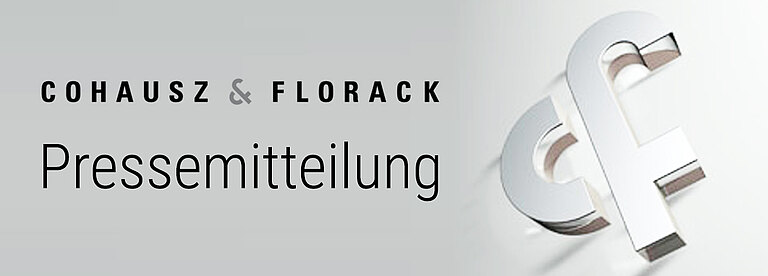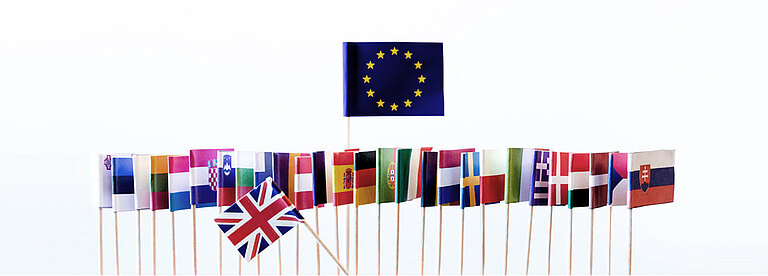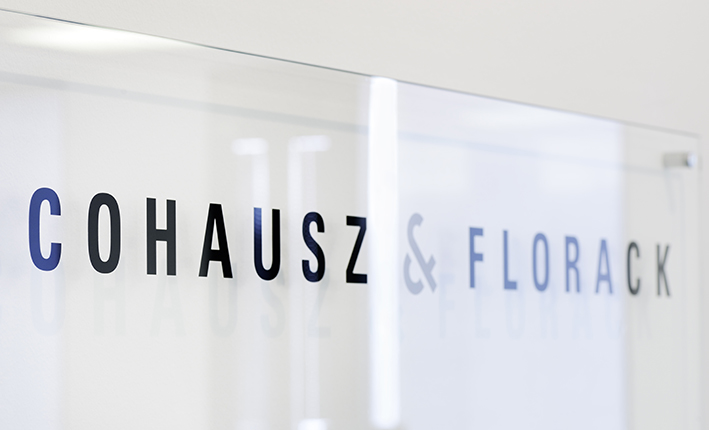What is an SPC?
SPCs can provide a patent term extension of up to five years and compensate patent owners for the regulatory delays caused by marketing authorisation procedures for medicinal and plant protection products.
What is the significance of SPCs compared to regular patent filings?
Compared with the 11,400 pharmaceutical and biotech patent applications that are filed on average each year with the European Patent Office, the number of SPC applications is small (eg, an average of 88 a year in Germany). This discrepancy results from the fact that SPCs can be obtained only for products that have been authorised for the first time as medicinal or plant protection products in the European Union.
Despite the scarcity of SPCs, they have tremendous economic significance. Unlike most patents, each granted SPC protects a commercialised product. Because of the immense upfront R&D costs incurred to bring a drug to market, the usual 20-year patent term is often insufficient to allow for any return on investment. Against this background, SPCs are indispensable tools to amortise the costs that accrue before a marketing authorisation can be obtained. Thus, at the end of the patent term – when, in the case of best-selling drugs, billion-dollar revenues are at stake – each day of patent term extension gained through an SPC counts.
For which countries can SPCs be obtained?
SPCs for medicinal products in the European Union are governed by EU Regulation 1768/92, which came into force on January 2 1993 and was codified and replaced by EU Regulation 469/2009 (referred to as the ‘MP-SPC Regulation’). A similar legislative framework is in place for SPCs for plant protection products, although this is not discussed further here. These regulations apply in all 28 EU member states. Of the non-EU countries for which European patents can be granted, only some (eg, Switzerland, but not Turkey) have SPC legislation in place. Only SPCs within the European Union are discussed here.
What is the duration of an SPC?
SPCs extend the patent term for a period that is equal to the time that elapsed between filing the patent application and the first EU marketing authorisation, minus five years. The overall term of an SPC may not exceed five years. In calculating the duration of SPCs, the first marketing authorisation in the European Economic Area (EEA) (ie, the European Union plus Iceland, Liechtenstein and Norway) is important, as it can differ from the first marketing authorisation in the country in which the SPC application is being filed (Article 13 of the MP-SPC Regulation). In Seattle Genetics (C-471/14) the ECJ clarified that the date of first marketing authorisation is the date of notification of the decision granting the marketing authorisation. A first marketing authorisation in non-EEA country Switzerland can also count as a first authorisation in the EEA, because previously it automatically extended to Liechtenstein, an EEA member (see AstraZeneca, C-617/12). Today this extension applies only with a certain delay, but may still be important for calculating the SPC term.
According to EU Regulation 1901/2006, the SPC term can be further extended by six months if the marketing authorisation preparations included clinical trials specifically addressing paediatric use of a drug. The ECJ clarified in Merck (C-125/10) that an SPC can also be granted with a zero or negative term, which can be desirable, as paediatric extensions are possible only if an SPC is in place. Hence, for example, a six-month extension of a minus-two-months negative-term SPC may result in a four-month patent term extension for the owner.
What subject matter is eligible for SPC protection?
For pharmaceutical SPCs, only active pharmaceutical ingredients (including derivatives thereof – eg, salts or esters (Farmitalia/Idarubicin, C-392/97) – and combinations) protected by a basic patent and having administrative marketing authorisation as a medicinal product can be the subject of an SPC. As defined in Article 1 of the MP-SPC Regulation, ‘basic patent’ means:
• a patent protecting the active pharmaceutical ingredient as such;
• a process to obtain the product; or
• an application of the product.
Formulation patents and medical device patents cannot be the subject of SPCs.
What are the conditions for obtaining an SPC?
SPC applications must be filed with each national IP office on a country-by-country basis (Article 9 of the MP-SPC Regulation). The filing deadline is six months from receiving the marketing authorisation for that country (nationally or centrally via the European Medicines Agency) or within six months of obtaining the basic patent, whichever is later (Article 7 of the MP-SPC Regulation). Calculation of the SPC filing deadline takes into account the first market approval in the country of filing, not the first market approval in the EEA. Paediatric extensions can be applied for together with the SPC application or up until two years before expiry of the SPC.
An SPC may be granted only to the basic patent owner or its successor in title (Article 6 of the MPSPC Regulation). In accordance with Article 3 of the MP-SPC Regulation, an SPC can be granted only if, at the SPC application filing date:
• the basic patent protecting the product is in force;
• a valid marketing authorisation has been granted in accordance with EU Directive 2001/83/ EC (pharmaceutical products) or EU Directive 2001/82/EC (veterinary products);
• the product has not already been the subject of an SPC belonging to the same person; and
• the marketing authorisation is the first to have been granted for this product in the country for which the SPC application is filed.
What must be considered when filing SPCs for combination products?
In Article 1 of the MP-SPC Regulation, the ‘product’ that can be the subject of an SPC is defined as “the active [pharmaceutical] ingredient or combination of active ingredients of a medicinal product”. Hence, a product comprising a single active pharmaceutical ingredient and a combination product comprising that same ingredient are two different products, each potentially eligible for separate SPCs.
For an SPC covering a combination product to be granted, it is generally necessary that the summary of product characteristics accompanying the marketing authorisation specify the combination in its qualitative and quantitative composition section. It is generally insufficient for this summary to stipulate that the product is authorised (only) for use in combination therapy with another drug. Hence, strictly speaking, only fixed-dose combination products (eg, a formulation of two or more active ingredients combined in a single dose form) can be covered by a combination SPC. Further requirements for combination SPCs are discussed below.
What criteria should be used to determine whether a product is protected by a basic patent?
Europe was divided on how to determine whether a product for which a marketing authorisation has been issued is protected by a basic patent according to Article 3(a). Some jurisdictions (eg, Germany, the United Kingdom, the Netherlands and France) relied on the express wording of the basic patent (the disclosure test), whereas other jurisdictions (eg, Belgium) resorted to the patent’s scope of protection (the infringement test).
In November 2011 in a quintet of landmark decisions (Medeva BV (C-322/10), Georgetown University (C-422/10), Yeda (C-518/10), University of Queensland (C-630/10) and Daiichi (C-6/11)), the ECJ defined a new test that relies on the disclosed content of the granted claims themselves (“specified [or identified] in the wording of the claims”). The ECJ later confirmed this test (eg, in Actavis v Sanofi (C-443/12)). However, what degree of “specification/ identification in the wording of the claims” is necessary and sufficient remains unclear and a major matter of dispute in many of the SPC cases pending before European courts. In Eli Lilly (C- 493/12) the ECJ provided some guidance, stating that the active ingredient need not be identified in the claims of the patent by a structural formula, but that functional claim language may also suffice. The question was again referred to the ECJ in a recent case (Teva UK, C-121/17); however, it remains to be seen whether the ECJ will use the opportunity to provide further clarification on this important issue.
When prosecuting patent applications for new active pharmaceutical ingredients, it is advisable to ensure that all potential products (individually and in combination) are expressly mentioned in the claim language.
What is the scope of protection afforded by an SPC?
According to Article 4 of the MP-SPC Regulation, the protection conferred by an SPC shall – within the limits of protection conferred by the basic patent – extend only to the product covered by the marketing authorisation and for any medicinal use of the product authorised before expiry of the SPC. In obiter dicta in the abovementioned ECJ case quintet and the subsequent decision in Novartis v Actavis concerning valsartan (C–442/11 and C–574/11), the ECJ clarified that an SPC provides the same protection as the basic patent against unauthorised use of the product in the form of any medicinal product that contains that product. Accordingly, sale of a combination product A+B would infringe an SPC for product A.
Is it possible to cover several products with an SPC or to obtain several SPCs per basic patent?
As a rule, an SPC can cover only a single product. Combination products can be the subject of an SPC only if the basic patent identifies the specific combination in the claim wording.
The ECJ addressed the question of whether a patent protecting different products can also serve as basis for more than one SPC in Actavis v Sanofi (C-443/12), Actavis v Boehringer (C-577/13) and Georgetown II (C-484/12).
In Actavis v Sanofi the ECJ considered that in principle, it is possible to obtain several SPCs on the basis of a patent protecting several different products, provided that each (combination) product is protected as such by the basic patent on which the SPC relies. However, certain limitations apply, which makes it necessary to evaluate each case individually.
For example, in Actavis v Boehringer a patent claiming an active pharmaceutical ingredient A as the sole subject matter of “the invention”, and for which an SPC had already been obtained, could not serve as the basis for a second SPC on the combination of this active ingredient with another substance, irrespective of whether this combination is “specified/identified in the wording of the claims”.
However, in Georgetown II the ECJ allowed a basic patent claiming a combination of active pharmaceutical ingredients A+B for which a combination SPC had already been obtained to serve as basis for a second SPC for one of those active pharmaceutical ingredients if this was also individually protected as such by that patent. Hence, the ECJ held in its most recent decisions that a patent protecting different products can serve as basis for more than one SPC as long as the product concerns an active pharmaceutical ingredient or a combination of two active pharmaceutical ingredients which are “protected as such” and “specified/identified in the wording of the claims”.
It is established case law that it is impossible to obtain more than one SPC for the same product or indication. A notable exception to this rule is when the underlying patents are owned by different parties, which is known as a third-party SPC (see ARP Manufacturing BV v Bureau voor de Industriele Eigendom (C-482/07) and Biogen Inc v Smithkline Beecham (C181/95)).
Is it relevant for which use of a product the first marketing authorisation was granted?
According to earlier ECJ case law, as soon as a marketing authorisation for a product had been granted in the EEA, no further SPC based on a different therapeutic use of that product was possible. However, in Neurim (C-130/11) the ECJ held that “the mere existence of an earlier marketing authorisation obtained for a veterinary medicinal product does not preclude the grant of a supplementary protection certificate for a different application of the same product for provided that the application is within the limits of the protection conferred by the basic patent relied upon for the purposes of the application for the supplementary protection certificate”.
The applicability of this decision and its implications are controversial. It may have opened up the possibility of obtaining SPC protection for second medical uses. More referrals to the ECJ on this issue will be needed to clarify this important field of SPC law.
How can SPCs be forfeited or lost?
SPCs are linked to the validity of the basic patent for which they were issued. Therefore, an SPC becomes invalid if the underlying basic patent prematurely lapses or is revoked, or if it is limited to an extent that it no longer protects the product for which the SPC was granted (Article 15 of the MP-SPC Regulation). Moreover, an SPC lapses if:
• the certificate holder surrenders it;
• the certificate holder fails to pay the annual fees in time; or
• the marketing authorisation for the respective medicinal product is withdrawn (Article 14).
SPCs can be invalidated by third parties in national nullity proceedings before the competent national courts.
What needs to be observed during prosecution of SPC applications?
The low number of SPC applications filed annually, coupled with the tremendous economic importance of SPCs and the complexity of parallel filings in potentially all 28 EU member states, calls for appointing an experienced lead counsel in Europe to manage, coordinate and oversee the diverse national SPC examination proceedings. The SPC prosecution strategy should be as consistent as possible across different countries and claim language should be adapted well before grant in order to allow for effective and comprehensive SPC protection.
Conclusion
Although having been in force for over 15 years and the subject of a plethora of ECJ decisions, the SPC regulation is still one of the most unsettled and controversial areas of European IP law. Many users of the SPC system have been disappointed by the “guidance” given by the ECJ, which often seems to open up more new questions than it answers. Regarding the planned unitary patent system, the currently envisioned legal framework already provides for SPCs derived from European patents to fall under the jurisdiction of the Unified Patent Court if no opt-out is declared. However, a legal framework for a unitary SPC still needs to be drafted and negotiated. A key area of dispute in this respect is the nature and identity of the granting authority. Given the abovementioned uncertainties in existing SPC law, it may be advisable, instead of drafting a new unitary SPC regulation, to make use of the opportunity and expand, reword and clarify the existing SPC regulations. First proposals and initiatives in this respect are already underway and one should stay tuned. One thing is certain – exciting times lie ahead.
This article first appeared in Patents in Europe: Helping business compete in the global economy 2018/2019, a supplement to IAM, published by Globe Business Media Group - IP Division. To view the guide in full, please go to www.IAM-media.com.
Photo credit: science photo - Shutterstock.com





